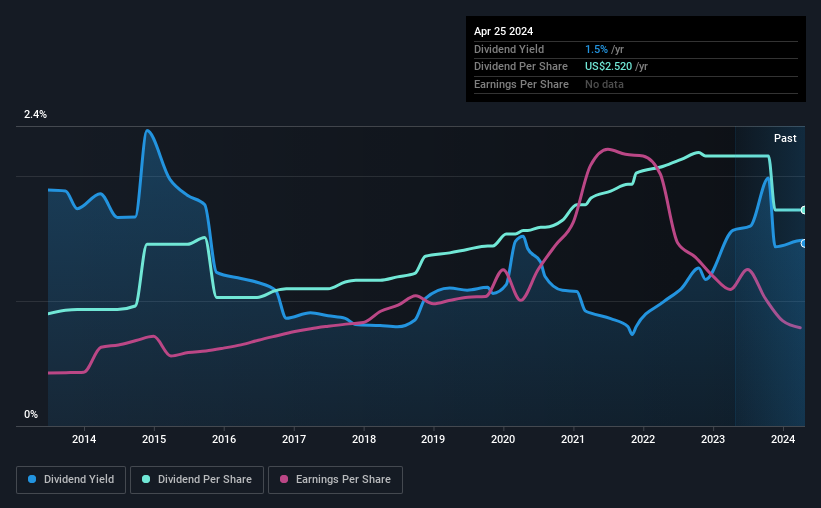- United States
- /
- Banks
- /
- NasdaqGM:HIFS
Hingham Institution for Savings (NASDAQ:HIFS) Has Affirmed Its Dividend Of $0.63
The board of Hingham Institution for Savings (NASDAQ:HIFS) has announced that it will pay a dividend on the 15th of May, with investors receiving $0.63 per share. The dividend yield is 1.5% based on this payment, which is a little bit low compared to the other companies in the industry.
View our latest analysis for Hingham Institution for Savings
Hingham Institution for Savings' Earnings Will Easily Cover The Distributions
While yield is important, another factor to consider about a company's dividend is whether the current payout levels are feasible.
Hingham Institution for Savings has a long history of paying out dividends, with its current track record at a minimum of 10 years. Using data from its latest earnings report, Hingham Institution for Savings' payout ratio sits at 22%, an extremely comfortable number that shows that it can pay its dividend.
EPS is set to fall by 5.0% over the next 12 months if recent trends continue. If the dividend continues along recent trends, we estimate the future payout ratio could be 26%, which we consider to be quite comfortable, with most of the company's earnings left over to grow the business in the future.

Dividend Volatility
The company has a long dividend track record, but it doesn't look great with cuts in the past. Since 2014, the dividend has gone from $1.31 total annually to $2.52. This works out to be a compound annual growth rate (CAGR) of approximately 6.8% a year over that time. We have seen cuts in the past, so while the growth looks promising we would be a little bit cautious about its track record.
Dividend Growth Is Doubtful
Given that the dividend has been cut in the past, we need to check if earnings are growing and if that might lead to stronger dividends in the future. In the last five years, Hingham Institution for Savings' earnings per share has shrunk at approximately 5.0% per annum. If earnings continue declining, the company may have to make the difficult choice of reducing the dividend or even stopping it completely - the opposite of dividend growth.
In Summary
In summary, while it's good to see that the dividend hasn't been cut, we are a bit cautious about Hingham Institution for Savings' payments, as there could be some issues with sustaining them into the future. While Hingham Institution for Savings is earning enough to cover the dividend, we are generally unimpressed with its future prospects. We don't think Hingham Institution for Savings is a great stock to add to your portfolio if income is your focus.
Companies possessing a stable dividend policy will likely enjoy greater investor interest than those suffering from a more inconsistent approach. However, there are other things to consider for investors when analysing stock performance. Just as an example, we've come across 2 warning signs for Hingham Institution for Savings you should be aware of, and 1 of them shouldn't be ignored. If you are a dividend investor, you might also want to look at our curated list of high yield dividend stocks.
Valuation is complex, but we're here to simplify it.
Discover if Hingham Institution for Savings might be undervalued or overvalued with our detailed analysis, featuring fair value estimates, potential risks, dividends, insider trades, and its financial condition.
Access Free AnalysisHave feedback on this article? Concerned about the content? Get in touch with us directly. Alternatively, email editorial-team (at) simplywallst.com.
This article by Simply Wall St is general in nature. We provide commentary based on historical data and analyst forecasts only using an unbiased methodology and our articles are not intended to be financial advice. It does not constitute a recommendation to buy or sell any stock, and does not take account of your objectives, or your financial situation. We aim to bring you long-term focused analysis driven by fundamental data. Note that our analysis may not factor in the latest price-sensitive company announcements or qualitative material. Simply Wall St has no position in any stocks mentioned.
About NasdaqGM:HIFS
Hingham Institution for Savings
Provides various financial services to individuals and small businesses in the United States.
Proven track record with adequate balance sheet.
Similar Companies
Market Insights
Community Narratives



